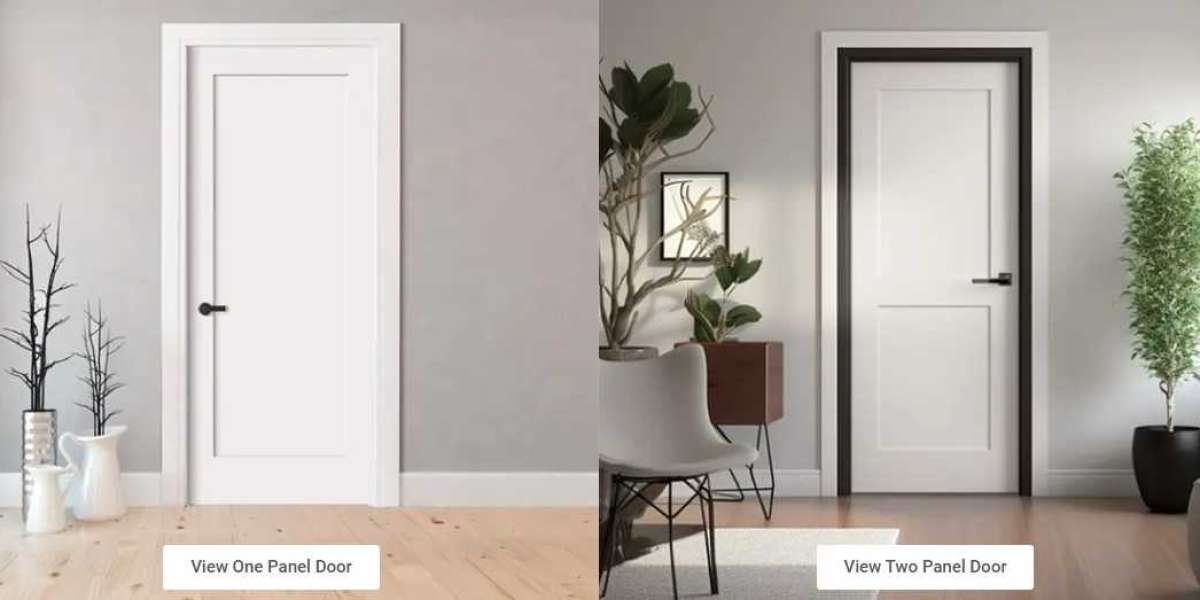Choosing the right doors for your home is more than just a functional decision—it impacts aesthetics, energy efficiency, soundproofing, and even safety. Two of the most common options are interior doors and prehung interior doors, each with distinct advantages and ideal use cases.
In this comprehensive guide, we’ll explore:
What interior doors and prehung doors are
Their key differences in construction, installation, and cost
Pros and cons of each type
How to choose the best option for your home
1. What Are Interior Doors?
Interior doors are essential components of any home, separating rooms while maintaining privacy and style. They come in various materials, designs, and configurations, including:
Types of Interior Doors
Solid Wood Doors – Durable, elegant, and excellent for sound insulation. Common woods include oak, pine, and mahogany 2.
Hollow Core Doors – Lightweight and budget-friendly, with a honeycomb interior structure. Best for low-traffic areas like closets 2.
Solid Core Doors – Made from engineered wood with a dense core, offering better soundproofing than hollow core doors 11.
Glass Panel Doors – Allow light flow between rooms, ideal for living rooms and dining areas 9.
French Doors – Elegant double doors with glass panes, perfect for connecting spaces like dining rooms and patios 2.
Pros of Standard Interior Doors
✅ More Affordable – Slab doors (without frames) cost less upfront 6.
✅ Customizable – Can be stained, painted, or modified to fit existing frames 2.
✅ Variety of Styles – Available in panel, shaker, flush, and louvered designs 9.
Cons of Standard Interior Doors
❌ Complex Installation – Requires precise hinge mortising and frame alignment 3.
❌ Less Structural Integrity – If the existing frame is damaged, the door may not fit properly 7.
❌ Time-Consuming – Hanging a slab door from scratch takes longer than installing a prehung unit 11.
2. What Are Prehung Interior Doors?
A prehung interior door is a complete unit that includes:
The door slab
A pre-attached frame (jamb)
Hinges already mounted
Pre-cut holes for the doorknob and strike plate 611.
Common Uses for Prehung Doors
New Construction – Builders prefer them for quick, uniform installation 3.
Full Renovations – Ideal when replacing both the door and frame 11.
Damaged Door Openings – Simplifies installation in rough or uneven doorways 7.
Pros of Prehung Interior Doors
✅ Faster Easier Installation – Comes pre-assembled, reducing labor time 4.
✅ Better Alignment – Factory-set hinges ensure smooth operation 11.
✅ Weather-Tight (for Exterior Use) – Some models include built-in weatherstripping 3.
✅ More Durable – Less prone to warping or misalignment over time 11.
Cons of Prehung Interior Doors
❌ Higher Upfront Cost – More expensive than slab doors due to included frame and hardware 7.
❌ Heavy Bulky – Harder to transport and maneuver (some weigh over 100 lbs) 7.
❌ Limited Customization – Fewer style options compared to standalone slab doors 3.
3. Key Differences: Interior Doors vs. Prehung Doors
| Feature | Standard Interior Door | Prehung Interior Door |
|---|---|---|
| Construction | Just the door slab | Door + frame + hinges |
| Installation | Requires frame setup | Ready to install |
| Cost | $50–$300+ (slab only) | $200–$800+ (full unit) |
| Best For | Replacing existing doors | New builds, full renovations |
| DIY-Friendliness | Moderate skill needed | Easier for beginners |
4. How to Choose the Right Door for Your Home
When to Choose a Standard Interior Door
✔ Replacing an existing door with a good frame 6.
✔ Budget-conscious projects where cost is a priority 7.
✔ Custom designs (e.g., unique stains, carvings, or glass inserts) 9.
When to Choose a Prehung Interior Door
✔ New construction or major renovations 3.
✔ Damaged or uneven door frames 7.
✔ DIYers who want a hassle-free installation 4.
5. Installation Comparison
Installing a Standard Interior Door
Measure Prepare – Ensure the slab fits the existing frame.
Mortise Hinges – Requires precise cutting for hinge placement.
Hang the Door – Align and secure it to the frame 3.
Installing a Prehung Door
Remove Old Door Frame (if necessary).
Position the Unit – Place into the rough opening.
Shim Secure – Ensure it’s level before nailing in place 10.
Add Trim Hardware – Finish with casings and doorknobs 11.
6. Cost Breakdown
| Component | Standard Door | Prehung Door |
|---|---|---|
| Door Slab | $50–$300 | Included |
| Frame | $100–$200 (if needed) | Included |
| Hinges Hardware | $20–$50 | Included |
| Labor (if hired) | $100–$300/door | $150–$400/door |
Prehung doors save on labor costs but have a higher initial price 611.
7. Final Verdict: Which One Should You Pick?
For quick, no-fuss installation → Prehung doors (best for new builds).
For budget-friendly replacements → Standard slab doors (if the frame is intact).
For soundproofing durability → Solid core prehung doors.
Pro Tip:
If you’re unsure, consult a professional to assess your door frame condition before deciding 11.
Conclusion
Both interior doors and prehung doors have their place in home design. Standard doors offer flexibility and affordability, while prehung doors provide convenience and structural integrity. By understanding your project’s needs—whether it’s a simple replacement or a full renovation—you can make the best choice for your home.
Need help selecting the perfect door? Check out DoorCart’s prehung options or explore Interior Doors UK’s stylish designs for inspiration!













